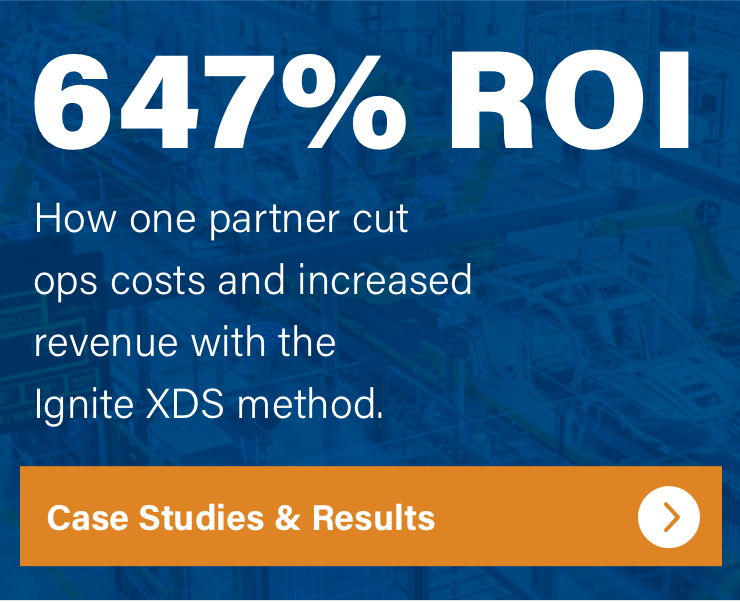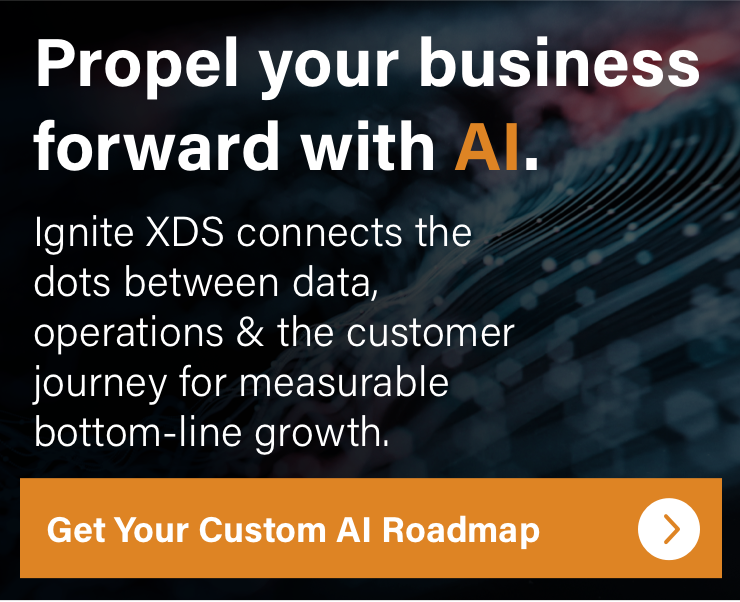
The Executive’s Playbook for AI: What to Watch, What to Ignore
AI isn’t coming, it’s here. But for many mid-market executives, that reality creates more questions than clarity.
Which tools are worth investing in?
What’s real vs. hype?
And how do you separate signal from noise when everyone is selling “cutting-edge solutions”?
Here’s the truth: AI isn’t a shortcut. It’s an accelerator.
But it only works if your business is already pointed in the right direction.
At Ignite XDS, we’ve spent the last 18 months turning AI anxiety into structured advantage, for manufacturers, service providers, distributors, and more. This isn’t theory. It’s execution. And this playbook outlines what we’ve learned.
Rule #1: Start With the Business Problem, Not the Tool
If your first move is buying software, you’re already behind.
Executives are being pitched AI chatbots, forecasting engines, content writers, CRMs, virtual assistants, the list goes on. But without a system to align it to, every tool becomes a Band-Aid on a bigger issue.
Example: A Tier II automotive supplier came to us with a fractured sales system and a stagnant lead pipeline. AI wasn’t the starting point, alignment was. After redefining their value prop, retraining their sales engineers, and implementing a strategic outbound engine enhanced by AI, they sold for $40M+ in under 5 years.
What to Watch:
- Root causes: Are your marketing, sales, and ops aligned?
- Bottlenecks: Where are you losing time, money, or momentum?
- Readiness: Do you have data structures and processes that can even support AI?
What to Ignore:
- "Top 10 AI tools for growth!"
- Platforms that solve surface-level symptoms
Rule #2: Think in Use Cases, Not Buzzwords
The fastest way to waste an AI investment? Start with the phrase “We should be doing something with AI.”
Instead, anchor everything to specific, measurable use cases tied to operations, customer experience, or profitability.
Common Mid-Market AI Wins:
- Predictive inventory management
- Real-time job costing dashboards
- NLP-powered customer sentiment tracking
- AI-enabled sales enablement (e.g., content, pricing models, next-best-actions)
- Automated inbound lead routing and prioritization
- Risk flagging for compliance and contract management
Example: A food service distributor couldn’t answer basic profitability questions without hours of reporting. Ignite deployed a custom AI dashboard that delivered real-time insights across reps, drivers, and routes, leading to $4M in savings and a strategic reshaping of the sales org. See AI in action with other partners.
Rule #3: Beware the Mirage of “Instant ROI”
Here’s the uncomfortable truth: The AI wins worth having aren’t instant.
You can absolutely improve personal productivity overnight (drafting content, summarizing meetings, writing reports). But for real organizational ROI, AI embedded into workflows, decisions, and customer journeys, you need a foundation first.
Example: A manufacturing client saw a 647% ROI in year one. But it didn’t come from a tool—it came from mapping the customer journey, aligning internal systems, and then layering AI where it had leverage.
Watch For:
- Internal training and buy-in
- Clean, accessible data
- Defined workflows AI can enhance
Ignore:
- Vendors promising plug-and-play transformation
- Any AI that “runs in a silo”
Rule #4: Let AI Reduce Friction: Not Replace Thinking
At Ignite, we don't use AI to replace people. We use it to eliminate drag.
In construction? We use AI to identify workflow delays and prevent injuries before they happen.
In manufacturing? AI helps our clients route production dynamically, forecast demand, and catch defects faster than any team could.
In marketing? We use AI to score leads, personalize content, and surface invisible churn risks.
But in every case, AI follows strategy.
Example: A fluid power OEM was weeks from collapse. New tech wasn’t the problem, they’d already invested. The issue was market misalignment. We rebranded the company, activated AI-powered campaigns, and rebuilt their internal culture. Two years later? $45M exit.
Watch For:
- Tasks that create unnecessary drag
- Decisions that require better visibility
- Handoffs where speed matters
Ignore:
- “One-click” everything
- Fully outsourced thinking
Rule #5: Align AI With Your Customer Experience
Too many leaders think of AI as back-office efficiency. The real advantage? Experience delivery.
When properly embedded, AI enables:
- Hyper-personalized digital journeys
- Real-time support and recommendations
- Adaptive content based on behavior
- Sales interactions that are timelier and more relevant
This isn’t about marketing automation. This is about consistency, precision, and speed—at scale.
Example: An automotive dealership we worked with had solid sales but a leaky customer experience. We implemented a data-driven outreach strategy using AI-enhanced segmentation and personalization. The result? Doubled monthly sales, doubled service tickets, and a customer database that grew 2.5X in 24 months.
Final Thought: AI Is Not the Strategy But It Is the Accelerator
Your AI advantage doesn’t come from buying more tools.
It comes from building systems that AI can enhance.
The companies winning with AI aren’t chasing every trend—they’re investing in alignment, process, and execution. That’s what Ignite XDS helps mid-market businesses do every day.
So, before you implement your next tool, ask:
Is your business ready to use it? Or are you just adding noise?
Ready to Lead, Not Follow?
If you know there’s opportunity in AI, but needs clarity on how to make it real, we’ll help you build a system that works.
Let’s talk. Book your Fit Call and we'll dive into your AI Readiness Diagnostic.


